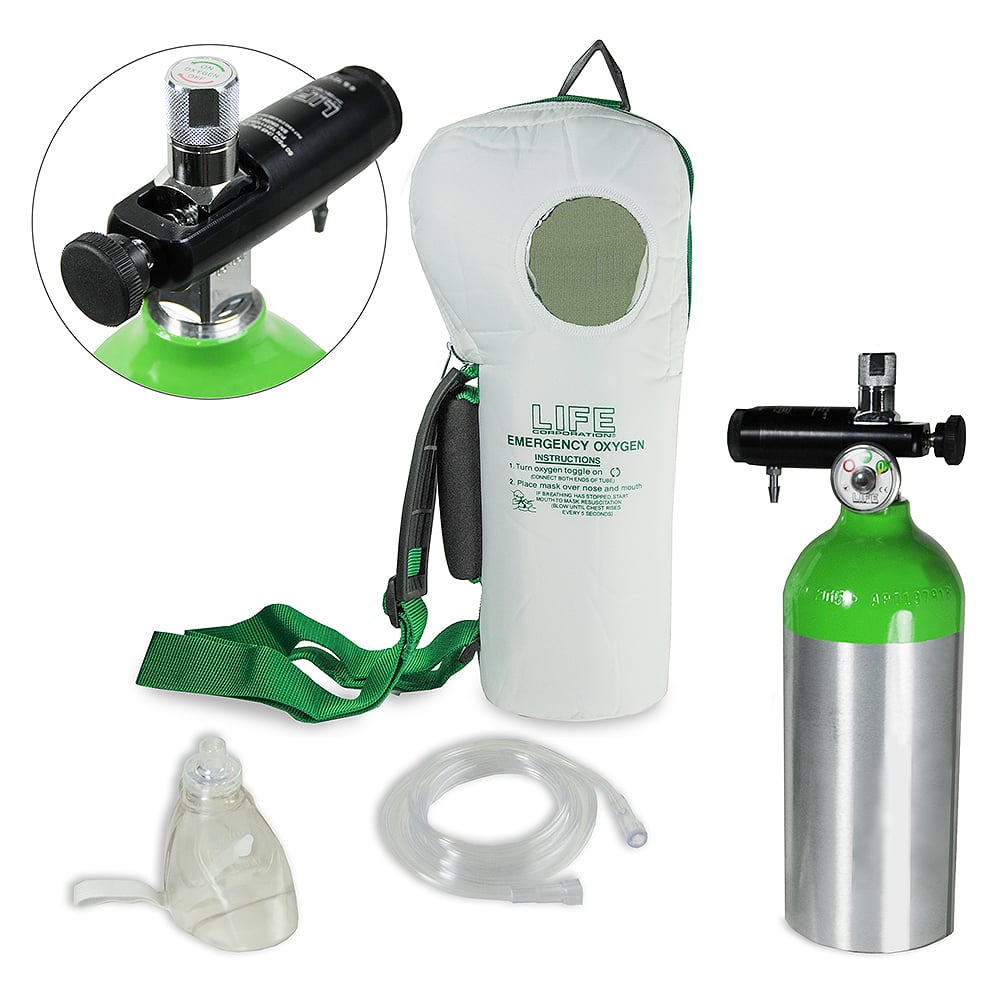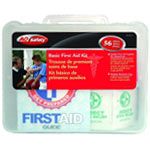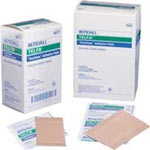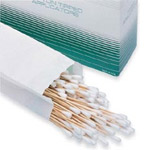Doctors prescribe various treatments depending on the severity of their patient’s chronic respiratory condition....
Emergency Oxygen Kits
What is an Emergency Oxygen System?
Emergency oxygen is typically given to people when they are unable to receive sufficient oxygen into their cells without supplemental help, which can cause organ dysfunction, tissue damage, and death. This condition is known as hypoxia. Emergency oxygen kits include everything a rescuer would need to deliver oxygen to a person in need. This includes delivered via a mask, or bag-mask via oxygen tubing and pre
What Tools Are Needed to Give Emergency Oxygen?
- An Emergency Oxygen Cylinder
- A Release Regulator (with Operable Flow Meter and Pressure Gauge)
- An Oxygen Delivery Device (Such as a Mask or Bag Mask)
- Proper Training
Emergency First Aid Oxygen Kit Uses
Emergency Rescue Use
34% of patients who have to be brought to a hospital via ambulence must receive oxygen while on the way to the care center. Oxygen Kits are essential supplies for emergency responders, such as medics, EMTs, lifeguards, ski patrols, law enforcement, firefighters, and more. Medical professionals may use emergency oxygen when necessary for the following conditions:
- Asthma (when Severe)
- Cardiac Arrest
- Chronic Obstructive Pulmonary Disease (COPD)
- Drowning
- Pulmonary Embolism
- Shock
- Stroke
Emergency Oxygen Kit for Home and Private Business Use
Because emergency oxygen kits do not require a prescription, they are an important, potentially life-saving addition to any home, public or private facility, office, or factory First Aid Kit. Accidents and life-threatening medical emergencies can happen at any time, so it is always best to be prepared for the unexpected, such as an unattended child falling into a swimming pool or an employee heart attack at work. With an emergency home oxygen on hand, the sometimes fatal time gap in care between the emergency event and the arrival of emergency responders can be reduced. In some environments, it is sometimes seen as the duty of employees to respond to medical emergencies. For instance, flight attendants, athletic trainers, hotel hospitality, and private and public security officers should always be ready to help those in need. Those who want to be extra prepared may want to purchase the two-in-one LIFE StartSystem Portable Kit that comes with both emergency oxygen and a defibrillator.
Anyone who does plan to have a first-aid oxygen kit on hand should always ensure they also are properly trained on how to use the item and understand safety guidelines so if an accident does occur they are completely ready to go. It is possible, for example, to give a patient too much oxygen (hyperoxemia), so it is essential to understand when and for how long to give oxygen.

Portable Oxygen Kits for the Adventurer
These systems are particularly important for users who are in high-risk environments and situations regularly. For example, divers, miners, high altitude hikers, and anyone else who is at a higher risk of oxygen depletion should always have oxygen on hand in case of a medical emergency. Emergency oxygen kits for diving are an especially common item for divers to have on hand because injuries such as decompression sickness, near drowning, and lung barotrauma are more commonly experienced by those who dive. Those who want an especially lightweight and portable option may be interested in the LIFE SoftPac, which weighs only six pounds and includes a carrying strap.
Who May Need Emergency Oxygen?
The administration of emergency oxygen may be appropriate for:
- Any person who has stopped breathing
- An infant who takes fewer than 25 or more than 50 breaths per minute.
- A child who takes fewer than 15 or more than 30 breaths per minute.
- An adult who takes fewer than 12 or more than 20 breaths per minutes.
Safety and Precautions
American Heart Association and FDA Requirements
- Give 100% inspired oxygen during Basic Life Support and Advanced Cardiac Life Support
- Use supplemental oxygen at a flow rate of 10 - 12 LPM
- The system must have a flow rate of at least 6 LMP
Safety Guidelines
General safety to consider with the purchase of an Emergency Oxygen Kit:
- Regularly check the cylinder for leaks or corrosion.
- Never leave emergency oxygen tanks near high heat, sparks, flames, or flammable materials. This applies both when the emergency oxygen tank is being stored and when it is in use.
- Do not smoke near an oxygen cylinder.
- Never leave the cylinder in a precarious position in which it might fall or be knocked over.
- Handle cylinders in an appropriate and safe manner. Never pick it up or carry by the regulator or valve and never roll or drag the cylinder.
- Do not use petroleum, grease, or oil based products to clean these items.
- Never attempt to transfer oxygen from one device to another or to mix gasses inside a cylinder.
- Leave the labeling and markings on the device untouched.
- The patient should remain untouched by others during emergency oxygen delivery.
How to Choose the Perfect Kit
Many factors should be taken into consideration when choosing an emergency oxygen kit. These include the size and weight of the cylinder, portability, oxygen supply volume and duration, flow rate type, the delivery device's make and fit, and any physical features the user may deem necessary. Potential buyers should consider the following so they can choose the perfect system for their specific needs:
- Are high oxygen volume and supply duration (such as that seen with the 90-minute supply or lightness, compactness, and portability more appropriate features for the location and context in which this item will be used?
- Should this item be easily seen and accessed via a wall mount, or would it be more suitable to have this item stored in a cabinet away in a place out of sight and reach of children and young adults?
- Is a variable (only for EMTs) or a fixed flow rate device appropriate?
- What size mask is needed for the potential users? Does the mask need to be adult-sized, child-sized, infant-sized, or appropriate for more than one age group?
- What type of delivery device is preferred or necessary?
- Is a carrying case necessary for travel?
Sources
 American National Red Cross. Administering Emergency Oxygen. 2011.
American National Red Cross. Administering Emergency Oxygen. 2011.
 EMS Safety. Emergency Oxygen Administration 101.
EMS Safety. Emergency Oxygen Administration 101.
 Kane, Binita et al. Emergency oxygen therapy: from guideline to implementation.
Kane, Binita et al. Emergency oxygen therapy: from guideline to implementation.
 Harvard Medical School. Decompression Sickness. 2019.
Harvard Medical School. Decompression Sickness. 2019.






Login and Registration Form